Share your knowledge & learn from experts
Because prepping and community go hand in hand
Is the food too old? / aka when to can the can
(Recently I saw a forum question, “How to tell when to toss cans that have rust on the outside?” And it got me to thinking more about what was inside the can.)
As preppers we store food. We rotate and use our items regularly. (First in First Out ) But sometimes we don’t, it gets old and unused for whatever reason.
What is too old? First, you have to at least open it up (don’t just throw it away based on what the outside looks like). Assess what’s inside. Do you own little prepper experiment.
IF you HAD to eat it to survive, could you? Modern day food processing is pretty amazing. Look at the color and consistency. Smell it. If it looks okay and smells okay, taste a little (it won’t kill you). Again, could you eat it if you had to?
Here are the timeframes we’ve (very unofficially) determined that we’re generally comfortable with:
– Cans (that require a can opener): 6 years
– Cans with pull rings: 2 years (these are not sealed as well and mold frequently develops in them prematurely)
– Cheese: I’ve left a sealed package out in the garage as an experiment for 10 months, the package swelled, and some oils pooled, but it tasted fine — just much sharper. In the refrigerator: 2+ years
– Sour cream (16oz) / cream cheese (12oz) (refrigerated): 6 months. We buy small containers — once opened use them within about a week.
– Half and Half (64oz) (refrigerated): 3+ months
– Greek Yogurt (32oz) (refrigerated): 6+ months
– Cottage Cheese (16oz): <6 weeks (and it’ll be obviously moldy if it’s bad)
– Beer: room temperature/dark: 3 – 9 months, refrigerated: up to 2 years. It’s important to remember old beer doesn’t become dangerous to drink, it just gets old and can taste skunky or sour — but it’s harmless to the body. Essentially if it tastes fine, drink it.
– Saltines: I recently came across a sealed packages from ‘13, they tasted sour/salty almost like baking soda — but the sheep and chickens loved them.
– Frozen Meat: At the bottom of the (big) deep freezer we came across some butchered pork from ‘17, 5 years old. I was skeptical and gave some to the dogs, but it didn’t look bad. It was wrapped in plastic, then in butcher paper and the meat still looked good and wasn’t freezer burned. Experimentally we cooked some up in the crock pot, letting the pork shoulder cook on low overnight — and it was great. Great flavor and great consistency, we’ll (carefully, inspecting as we go) use the rest of it. (Edit added 2/13)
What to do with TOO OLD? I make pigcycles. I pour the contents of all the old cans into large bowls, stir them together into a slop, spoon them into quart ziplock bags, then freeze them. Then I’ll give them to our pig, or chickens, or occasionally our dogs on a hot day as a treat.
[Disclaimer: This is only my opinion and advice, old food should only be eaten in a survival situation.] Read MoreSummary Report: Our power went out
Last night our power went out for four hours. Everything was fine. I sat by the fire and read a garden seed catalog by candle light. This is dangerous: now I want to buy everything! Everything looks good in the catalog!
This was a good opportunity to review what worked and what needs fixing. Sharing here in case it is useful. I find it good practice to write up a review for myself. Suggestions are welcome.
..
Timeline
Power outage started around 7pm Power back on around 11pm (4 hours)What went well:
Having a keychain flashlight. I carry three mini flashlights on my keychain, which I have on me at all times. As soon as the power went off it was pitch-black dark, and of course – one of the flashlights was out of battery. Thankfully I have two spare. I was able to calmly and easily find my way around the house, to gather the family and go get the LED candles. LED candle lights. These are just the cheap pick from ikea – they glow like a candle and take two AAA batteries. They give off a nice soft glow. We had enough we could hand one to each person, and leave one on a table or at the top of the stairwell if needed. Once everyone has their own light, everything is calm. Natural gas fireplace. With no power, the main furnace won’t run. That’s why we have this. I keep the pilot lit all winter for exactly this reason. It costs me a few dollars per month to keep it lit, but you’re sure glad for it when you really need it. We flipped the switch and got heat and light. Left the fire on during the whole outage. Everyone stayed calm. The fireplace is on, so we just gathered nearby and relaxed. Have a nap. Read a book. Whatever suits you. Group text chat with our neighbours. We use Signal, because its the only app I trust for security. We are lucky to have two great sets of neighbours, with similar mindset (and they are much more skilled than I am at e.g. shooting, gardening, and other skills. I learn a lot from them). We’ve spent a long time building a relationship for our group. The app was useful – we could gather and share info. It helped to stay informed. Data connection. We were able to text lots of other neighbours and check on them, to see if everyone was okay. Luckily: yes. We do have a backup emergency phone on a different network, with a ‘pay-as-you-go’ card. Didn’t need to use it. Pantry food. We were able to easily open crackers, canned peaches, etc. And eat dinner without cooking. I enjoy intermittent fasting, and considered making it a ‘challenge’ for myself to get through the situation without eating. But I figured if I had to go help someone, or the situation got worse, it would be better to have energy. So I ate. Curtains and blinds. As soon as everyone was safe and cozy by the fire, I went around the house and closed everything to keep the heat in. DIY home repair. I have spent many months fixing leaks to try and make our home more passive and efficient. Installing vapor barrier. Taping and sealing. Installing gaskets and covers on electrical sockets. Weather stripping. etc. I have no direct measurements but I like to hope this helped. Friendly backup location. If worst comes to worst, we have a family member within driving distance that is in our covid cohort. We could load up the go bag and go there instead. Didn’t need to. But glad to have the option. Got to have a conversation about being prepared. After the power came on one of our neighbours texted us, discussing how we were doing. Their fireplace does not work, and has been broken for a long while. Discussing our steps and situation with them got them thinking, making comments like “huh, that’s a good idea. Maybe I should look into fixing our fireplace for next time…”. Great! That’s the kind of self-assessment and improvement I love to see.What could improve:
Fix my power outage alerts to be text messages, not email. I had alerts configured with the power company to notify me if the power went out. It was pretty obvious it went out. But setting them to email was dumb – I couldn’t access my email over the data connection; it was too hammered and slow. So I didn’t get any updates. Luckily our neighbour in the group chat was smarter than me, and had his set to text. So we could still get updates on the ETA to restore power. Wind-up hand crank flashlights. These did not work. I always thought these would be useful because they don’t require batteries. But the lights don’t give off much light. Also if you had young kids – the cranks take a certain amount of manual dexterity to wind them correctly. I won’t use these again. Much better to have simple LED candles. Stored water containers: empty out some of the water. I have several 7 gallon jugs. If it was seriously cold, they might freeze, expand, and burst. I should drain some water to store them 90% full, or down to 6 gallons per container. Keep doing house improvements. Long term, I want to add more attic insulation. Short-term, we have one very leaky window that needs to be fixed or replaced. My next summer projects may include installing a better exhaust vent for our bathroom fan that doesn’t let in cold air; and putting spray foam behind (but not inside) electrical boxes.Where we got lucky:
It was warm! Two weeks ago was -35C (-31F). Last night was -5C (23F) instead. Big difference. Much easier to deal with. We were very lucky this outage happened after it warmed up. The whole family was safe at home when it happened, not out driving or doing anything. Data connections and text messages still worked. If they hadn’t I would have gone by foot to check on one of our closest neighbours, who is elderly.Overall, pretty happy.
Now I need to budget for garden seeds.
Mini greenhouse out of scrap materials
While spending way too much time on Reddit, I came across a project that I wanted to talk about with someone. To avoid hurting the creator’s feelings, I didn’t want to comment on the actual Reddit thread itself. It’s a great project, but there are some changes I would make.
I don’t have a sunny windowsill, so I made a mini greenhouse to start my seeds
The creator of this project used standard pane glass and scrap wood from a previous project. Cost them $10 to build.
People in the comments said that the creator needs to provide some ventilation so that the plants do not cook and the creator responds that they did put some small holes in and filled the holes with cotton so bugs don’t get in. This probably won’t provide enough ventilation.
Changes I would make:
Place a hinge on one side so you could prop it open or easily gain access without having to remove the entire lid. Drill holes in the sides for ventilation and staple squares of screen window over the holes to prevent bugs. Add a thermometer inside to monitor temperatures. If things get too toasty I would prop open the lid or turn away from the sun. If things were not warm enough, painting the box black would absorb more warmth. Create 3″ feet in each corner to get the box up off the floor to prevent it from sitting in water and rotting.Has anyone made a mini greenhouse like this before? What changes would you make to this design?
Read More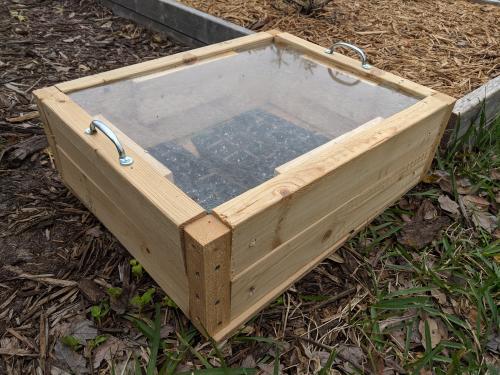
It is critical you prune your muscadines
I’m a firm believer that if you live in the south and are a prepper, then you should grow muscadines… preferably commercial varieties. Around here they grow wild almost everywhere. Unlike many food crops, muscadines really require little care. Diseases and insects don’t bother them and they can handle dry spells. Muscadines love the heat & humidity of the south. A mature vine can get 30 -40 feet long but I keep mine around 15 feet long. A mature commercial plant can produce around 60 pounds of grapes each year and they are soooooo good!
I have most of my vines inside my orchard and they are on a trellis system, but that is not necessary. They easily will grow up & along any fence line. And boy do they every grow. Muscadines mostly only fruit on new growth, so if you want a large crop, you need to prune back the vines each year and thin them out. I cut off all but a few inches, so that I have a few buds on each shoot. From that, each bud will put out several feet of new vine. The fruit forms on these new vines. That is why it is critical to prune your vines when they are dormant in the winter.
I just took these pics today. I pruned one row and called it a day.
In the spring, they will leaf out, grow new vines & set new fruit.
Read More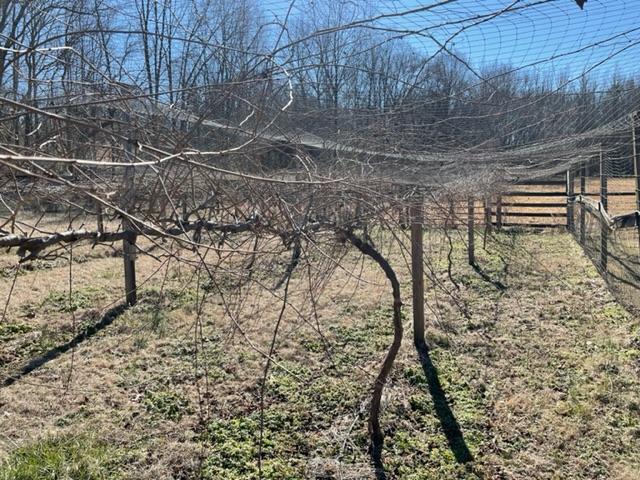
Little work light that pulls very few watts
Each time I have to actually use my preps, in a real world situation, I find things that need to be done differently than I originally thought & I find things I need to add to my preps. In the past several weeks, I’ve had to deal with two separate, multi day power outages at my mother in law’s. After the first event I added a Mr. Heater 30,000 BTU LP gas heater and it worked incredibly well at the second event last week.
I noticed, even with my two solar generators & several rechargeable Goal Zero lanterns, that I could use some extra lighting that would be flexible, bright & pull very little watts. During these events, I would use the solar generators to power lights & devices when the generator wasn’t running, such as overnight or when refueling. I found the lighting around my mother in law’s house would really drain the solar generators. Nothing they couldn’t handle but it gave me some concerns.
So after the first event I ordered these little mini LED work lights from Amazon for $13 each with free Prime delivery. They didn’t come in before the second event, but they did come in today. They are very highly rated on Amazon, and I can see why. They are small, lightweight & the legs can be manipulated to point it anywhere, or you could hang it by the handle. They are very bright at 1000 lumens yet only pull 11 watts. That means 9 of these would pull the same power as one 100 watt incandescent bulb.
I think these could be very helpful for folks planning on running some devices off of battery units, such as solar generators or the like. These last outages during freezing weather brought home some points to me. You can always use more lighting and being cold for long periods ain’t fun. I have adapted my preps accordingly.
Read More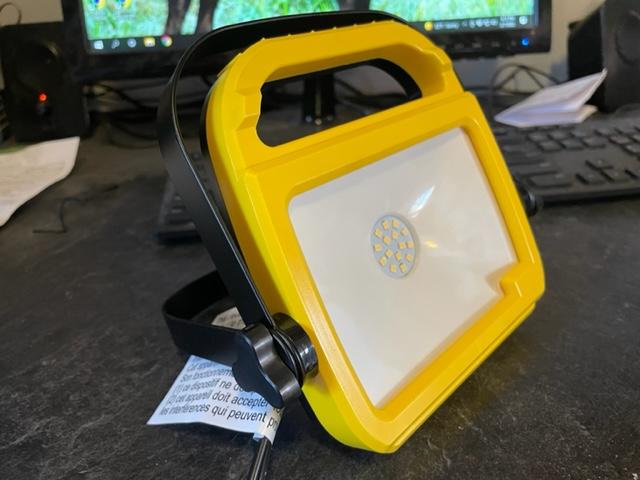
Grid down home/bug-out hygiene kit
What do y’all store to prepare for hygiene without running water and electricity? I put together a list that seems like it would cover the basics.
Read More7 things to prepare before it’s too late
I’ve been thinking about TEOTWAWKI or The End of the World as We Know It. To be clear, I believe that there are many other more likely scenarios to happen before this, but if you plan for the worst you will be prepared for the rest.
As part of my family’s plan I wanted to make a list of the things we need to get in order before it’s too late. They are in no particular order and is just a very short list of things we need to do. I am planning on expanding my description of and notes for each point once I finalize the list. What do all you preparedness experts think of this list and what would you add or change?
1) Have ways to collect, treat, and store water
Water is life, we all need a lot of it not only for drinking but cleaning, cooking, and hygiene. Not having it will quickly lead to disease, dehydration, and death. Not only is storing clean water important, but have ways to collect and clean more.
2) Store food and ways to cook it
Start with a week of food, then a month, then three, then six if possible. Have ways to cook and prepare multiple recipes with the food we store and don’t just do beans and rice every day.
3) Learn basic first aid and have a supply of medical supplies
Be able to treat wounds, sprains, cuts, and breaks. Store medications and don’t forget about dental and eye health. Store more than we think we will need.
4) Have backup sources of energy
Have alternative ways to stay warm, cool down, modes of transportation, and power the various devices and appliances in our home.
5) Fortify our homes and self
Secure our home against nature, humans, and animals. Learn personal self defense and carry some defense tool with us at all times if possible. No use preparing if we get our stuff stolen or die.
6) Create a reference library and practice various skills
The internet may not always be available, have some paper reference material and practice skills so we aren’t trying new things during the disaster.
7) Work with other preppers
We want to create a network of other like minded individuals and have goods and skills ready that can be used for trade and bartering.
Read MoreElectrical surge protection for older homes
I just bought several surge protectors for outlets used for electronic devices in my home (computer, radio power supply, printer, modem, router, TV). Now I wonder if those surge protectors will do more harm than good since my older home uses a two-wire system (hot wire and neutral, no third wire for ground, as I understand it).
Can anyone here speak to that issue? Does anyone have experience with Zero Surge protectors? Apparently they use a different approach to handling surges. Instead of directing surges to ground or neutral wires (again, my house doesn’t have ground wire at outlets), they handle it differently.
https://zerosurge.com/ungrounded-buildings-older-homes/
Thanks!
Read MoreLet’s talk Texas – how to prep your home for extreme cold
My heart goes out to the millions of Texans who lost power during extremely cold temperatures yesterday.
What lessons can we draw from this experience so that we can improve our future response to crises like these? I’ll speak to my area of knowledge, which is buildings. However, I have very little knowledge of regional construction practices specific to Texas, so please correct any errors or provide info as you see fit. I’d love to hear lessons from experts on community response, particularly with reference to protection of vulnerable populations. This might be disjointed.
Know the location of your main water shut-off(s). Ensure that you can operate it and that it doesn’t leak. In the event of pipes freezing or bursting, immediately shut-off the main water supply and drain all pipes via the lowest elevation fixture(s). Then return to the burst location and start collecting water. Most burst pipes are on the water supply system so the water won’t stop until you make it stop. My guess is that only a very small number of Texas homes have hydronic heat. However, if you have hydronic heat it will be very useful to ascertain whether the burst pipe is part of the heating system. If hydronic, kill power to the boiler and drain the system via drain valves on the boiler. In rare cases the waste piping system may rupture in freezing temperatures. This seems most common to areas prone to flooding where elevated houses are the norm and traps are suspended low or below the floor system and tend to freeze. This is the lottery win of frozen piping. Simply stop using this section of the waste system until you’re able to make repairs. All combustion-based boilers and furnaces will fail during a power outage due to electrical inputs for combustion and distribution. Boilers generally have considerably lower electrical input than furnaces, but neither will work without back-up power when the grid goes down. Portable generator systems that back-up modern furnaces and boilers are hit-and-miss due to potential sine wave problems. Inverter generators address this, but are considerably more expensive. I don’t have a good estimate for the fraction of heating/cooling that won’t work with a standard generator, but would guess that 1/4 of stuff installed in the past decade, especially premium equipment. I would expect almost all ductless minisplit heat pumps to fail. Many combustion water heaters work without electrical power as do most gas ranges/cooktops. Ranges have to be lit manually. These devices can be used to transfer heat to the building. Make certain you have battery back-up CO monitors before you mess with this. Boil water, fill bathtubs and allow the water to approach room temperature. My guess is that the combination of these two has the capacity to put 10-40 kbtu/hr into a home, which will often be sufficient to take homes out of the danger zone. Power-vented gas water heaters need electricity, but have very low power requirements. I’ve had customers place their power-vented water heaters on an uninterrupted power supply with good results. (This is technically a building code violation, so it’s not something I would provide as a service). Water, heating, and cooling systems belong on the inside of the building enclosure. They don’t belong in unconditioned attics, vented crawlspaces, or exterior walls. This is a nearly sacrosanct tenet of resilient, energy-efficient housing. In homes that are placed on slabs it can be very tempting to place these things in attics. Doing so should be accompanied by a plan to condition the attic, or at least around the component in question.*Edited CO2 to CO.
Read MoreIce Storm in Memphis
Well, I’m back in Memphis at my 100 year old mother in law’s house. I’d say half of Memphis is without power and half the traffic lights not working. The drive inside Memphis was rather scary. They say over 100,000 houses are without power Thankfully our farm in north Mississippi has power.
So after work, I loaded up my truck with the dual fuel generator, lots of extension cords, 25 gallons of gasoline and 5 of my 40 pound LP gas tanks. Also brought two of my Humless solar generators and my LP gas ventless heater. I don’t trust ventless heaters, so I placed it in front of the fireplace. She has natural gas logs but they won’t keep the room warm. This LP gas heater keeps the room toasty warm and only runs about 10% of the time.
Read MoreBOB Bifocals for old eyes
I’ve always kept a pair of cheap “cheaters” in my BOB, vehicle and everywhere else I think I might need them. I’ve recently begun swapping them out for safety glass with bifocal lenses. They are apx $15 at most local home improvement stores and come in different strengths. Last thing I want is an eye injury when I need my eyes most.
Read More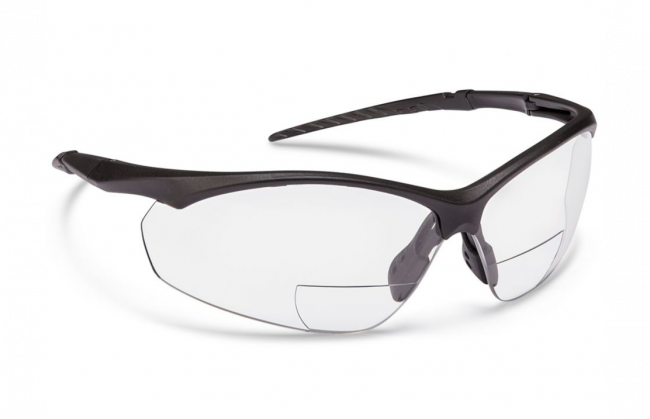
A nice figure about the stages of infection
Found in this document: https://www.woundsme.com/resources/details/evolution-wound-infection-continuum1
Read More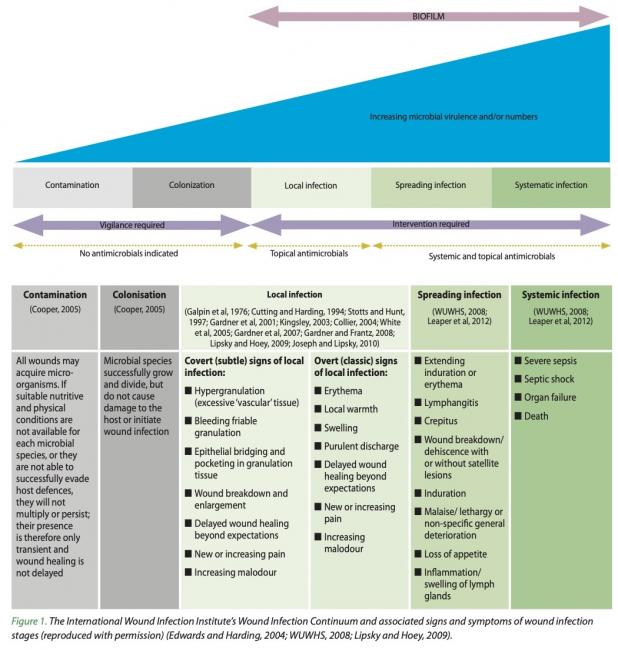
Bloomberg and other media reporting China massively stockpiling food essential, War fears muted
ByAdam Minter5 January 2022, 01:00 GMT
In recent months, food prices have hit 10-year highs, causing concern worldwide. Supply-chain bottlenecks, labor shortages, bad weather and a surge in consumer demand are among the factors responsible for the spike. So, too, is a lesser-known phenomenon: China is hoarding key commodities.
By mid-2022, according to the U.S. Department of Agriculture, China will hold 69% of the world’s corn reserves, 60% of its rice and 51% of its wheat. By China’s own estimation, these reserves are at a “historically high level” and are contributing to higher global food prices. For China, such stockpiles are necessary to ensure it won’t be at the mercy of major food exporters such as the U.S. But other countries, especially in the developing world, might ask why less than 20% of the world’s population is hoarding so much of its food.
China has operated granaries for thousands of years. In imperial times, they served as a source of tax revenue and a means of managing bad harvests, natural disasters, and war. Their importance grew as China’s population soared, yet the state’s ability to manage them faltered. During the late 19th and early 20th centuries, natural and political disasters brought hunger and starvation to millions. Outsiders referred to China as “the land of famine.” Political instability and revolution soon followed.
Mao Zedong and China’s Communist Party staked much of their credibility on “solving” hunger, but midcentury famines took the lives of tens of millions. President Xi Jinping, never one to criticize his own country, once remarked that many members of his generation still recall hunger. Those memories have informed Xi’s policies since the start of his regime. In 2013, just weeks after taking office, Xi endorsed a nationwide campaign to discourage people from wasting food. In 2020, the “clean-plate campaign” was resurrected as he called on Chinese to “maintain a sense of crisis about food security.”
That crisis isn’t just about having enough to eat. It’s about having enough food produced domestically to minimize reliance on anyone else. Two weeks ago, Xi told a high-level Communist Party meeting that “the food of the Chinese people must be made by and remain in the hands of the Chinese people.”
That won’t be easy. China’s inventory of arable land has been in decline for decades, nibbled away by urban development and soil contamination, and its farms are far less productive than counterparts in other countries. Efforts to boost productivity with policy incentives and technology investments are promising but unlikely to pan out for years.
So China is stockpiling. At home, the government is offering farmers a minimum price for their crops (which are then often stockpiled). In March, it raised the minimum price for wheat for the first time since 2014. Meanwhile, traders have taken advantage of a strengthening yuan to snap up grains at a feverish pace. China’s wheat imports surged 50% between January and July, compared to the same period of 2020.
The size and content of China’s commodity stockpiles is a jealously guarded state secret. But officials have been unusually open about the matter lately. In November, after a vaguely worded government missive about potential shortfalls this winter caused nationwide panic, agricultural officials announced that China had enough wheat stockpiled to last 18 months.
Other countries have been building up food reserves too, of course, especially as Covid-related disruptions persist. In June, the UN’s food agency warned that some low-income countries were likely to see food import costs jump as much as 20% for the year. Though the report didn’t single out any country for responsibility, China — as the world’s largest agricultural importer — certainly plays a crucial role.
Right or wrong, China has no intention of unwinding its stockpiles for the benefit of others. Nonetheless, there are steps it could take to help mitigate inflation. Most important, it should begin unwinding crop supports that raise domestic food prices beyond global ones. Meanwhile, a more open acknowledgement of China’s inevitable role in driving food inflation might encourage its leaders to work with others on food assistance to low-income regions.
China’s evolution from famine to feast delivered hundreds of millions of people from hunger. As its economy and clout grows, it should seek to ensure that others can enjoy the bounty.
Read MoreAn experiment in growing mushrooms
A couple of years ago, some large trees fell in my neighbors’ field. I had meant to chop the logs, but never got around to it and they started to rot. Then I got the idea from Ben Falk’s The Resilient Farm and Homestead to use them for growing mushrooms.
If you haven’t grown mushrooms before, they’re different from growing plants. Instead of growing them in soil, you grow them in a substrate, usually some sort of wood like logs, sawdust, or wood chips. Instead of seeds, mushrooms are planted with spore-inoculated wood, either plugs or sawdust depending on the type of mushroom.
While it’s doubtful you’ll live exclusively on mushrooms, there are some compelling reasons to grow them. Primarily, they’re pretty low maintenance once they’re established and will return season after season. Some will come back for longer than others and some take longer to start growing than others.
For our experiment, I ordered 25 golden oyster plugs from Etsy for $10. The golden oyster mushrooms are reportedly easy to grow and easy to identify. You can find much bigger deals on larger packs of plugs, either of one type or a variety. I wanted to keep our initial experiment focused and cheap.
I should say up front that we didn’t do things exactly by the book. Here’s how you’re supposed to plant mushroom plugs:
Cut down a small-diameter tree. Soak the log or logs in water. Drill holes in the log(s). The pros inoculating a lot of logs recommend an angle grinder with a special attachment over a drill, as it’s faster. Drive the plugs into the holes with a hammer or mallet. Coat the holes and each end of the log with melted wax to hold in moisture and keep out competing organisms.I didn’t use a fresh log, but there wasn’t any visible fungi growing on it. And I wasn’t concerned about moisture because it’s in a shady spot next to a creek and practically dripping with moisture. So I opted out of using wax.
I took my oldest son out with a drill, a hammer, and the plugs. He cheerily used the claw end to knock bark off the log while we took turns drilling holes and hammering in plugs.
Read More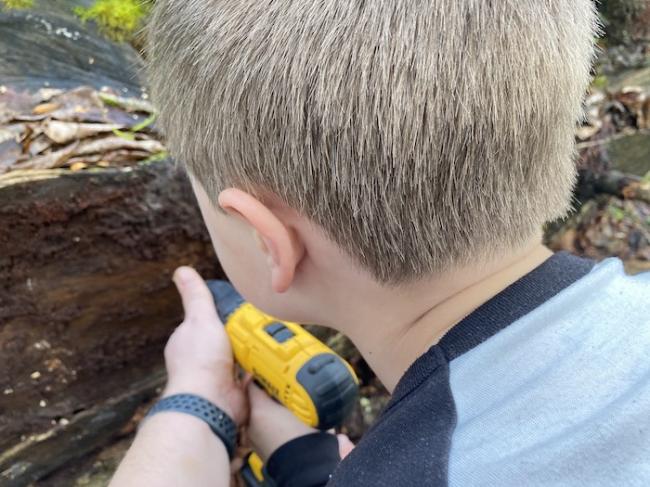
Have you ever heard a quote that stops you and makes you think about how you live?
Over my 65 years I have often pondered about life, how I live, where I live and what my choices actually mean to me. I’ve debated off gridding, prepping, survivialism, homesteading, urban prepping etc with my piers and friends and other preppers. I’ve tended to focus on how I as the individual lives and rarely thought no further on the issue than my immediate family.
I’ve seen and read images, texts and witnessed real life scenes that often give me food for thought, but rarely has anything made me stop what I was doing and give serious thought to a QUOTE or IMAGE , perhaps four maybe five times something has gotten my full focussed attention.
Today whilst watching a simple sci fi movie one character looking out over the city made a comment and it stopped me in my tracks, I would like to share that comment with you. I have added it to an image to give it greater meaning. I wonder if it will make any of your pause for thought?
Read More
Heads up massive CME alert for 2 February 2022
Solar storm warning: NASA predicts ‘direct hit’ on Earth in hours: ‘Fast and strong!’ | Science | News | Express.co.uk
Solar storm warning: NASA predicts ‘direct hit’ on Earth in hours: ‘Fast and strong!’A SOLAR STORM is heading straight for Earth in a “direct hit”, according to NASA, prompting fears of blackouts from the “fast and strong” impact.
Fast solar winds rocketed out of the Sun on January 29 along with a coronal mass ejection (CME). This means a solar storm has been tipped to reach the Earth by February 2. A CME is a large expulsion of plasma and magnetic field that explodes from the Sun’s corona (its outer layer).
Dr Tamitha Skov, a space weather psychists, posted on Twitter: “Direct Hit! NASA, NOAA & MetOffice predictions agree the #solarstorm launched Jan 29 will hit Earth by early Febuary 2!”
She later added: “The earlier post showed NOAA/SWPC prediction. This one shows the NASA prediction, which indicated the #solarstorm could hit as early as 18:00 GMT on February 1.
“The final post is the Met Office prediction. This model shows the #solarstorm hitting by 05:00 GMT on February 2.
Read MoreInfographics re volcano eruption
I was just alerted to these info graphics as I am in an area that could be affected – largely ash fall. I thought they were well done.
https://cdemtaranaki.govt.nz/taranaki-hazards/natural-hazards/volcanic/volcanic-infographics/?fbclid=IwAR0en-AixZZMGt9U8sID8YYExHVgsL-B9noWQ-YOnKhAs2-OPsWzHOsVWdI
Read MoreI had to pepper spray a couple of dogs. Here’s how that went
Today, I had to pepper spray a couple of dogs to protect my chickens (and to protect the dogs from the roosters). Long story short, it was effective and there’s a mostly happy ending. It was definitely a happier ending than if I had to shoot them or if a rooster had clawed them.
Check out our guide to the best pepper spray.
I was in my office working on an upcoming guide when my wife burst in and told me there were dogs outside messing with our beagle. I grabbed a gun and ran outside to find two nearly identical, very large dogs looking down at my beagle as she barked her head off at them. They looked like some kind of Collie mix.
I walked up to them and started yelling at them to “git.” They just stood there staring at me. I had the gun trained on them in case they were aggressive, but I saw collars on them and soon realized that they were harmless. Regardless, I still didn’t want them around my dog, and I definitely didn’t want them getting near my chickens.
I kept yelling at them until they finally got the message and took off down the road. But a few minutes they were back, in the woods across from our house.
I was worried they would come around to the other side of my yard and go after the chickens, so I parked my oldest son at the window to stand watch. Having written our guide to pepper spray, I decided that if they came back for the chickens, my can of POM would be a better deterrent than shooting them, and they clearly didn’t respond to verbal commands, so I slipped a can in my pocket.
Sure enough, after a few minutes he started yelling that they were near the chickens. I was sort of prepared, but not enough, slipping my bare feet into my Crocs and taking off running in the snow without a hat or jacket.
I have two chicken tractors, which are just movable wire cages. One has my old ISA Brown hens while the other has my Australorps, including two roosters. The dogs were circling the Australorp tractor and the birds were panicking. They’d knocked their waterer and feeder off their hangers and the hens were bunched up behind the roosters. If the dogs had breached the tractor, I’m not sure which would have had the worst of it: the dogs or the chickens. Those roosters frequently peck and claw at me, and I’m the one who feeds them (and yes, Napoleon, the chickens DO have large talons).
I already had the can of POM in my hand, so when one of the dogs approached me I sprayed it directly in the eyes. Or at least tried to: the wind was blowing a bit so not all of it connected. The dog didn’t seem to respond so I sprayed it again. It apparently took a second to register. After that, the dog’s nose started to twitch and it ran off to just over my neighbor’s property line.
The other dog had hid behind the tractor with the ISA Browns and it was looking for a way into the tractor. I gave it a good spray as well, because I had to make it clear that the chickens are not to be messed with. It learned a bit faster than its sibling and ran off to join it. With both dogs rubbing their noses in the snow, I was satisfied that they would leave the chickens alone.
To cut a long story short, we got in touch with the owner, who understood why I had to spray them, and they brought the dogs home. At least for a minute, before they got away again. I hope they don’t get around the chickens again, because I may have to take more drastic action.
Here’s what I learned from the experience:
1. If you keep a gun for self defense, you should also carry pepper spray. If I didn’t have pepper spray, I would have had to shoot them or hit them with sticks or something, because they clearly weren’t listening to me. I might could have lured them away with treats or meat, but that risked making them return customers.
2. The pepper spray was surprisingly silent. The can made no noise and the dogs didn’t either. I expected yelping or barking or something.
3. I should definitely get a belt holster for the pepper spray so I can keep it at the ready. The can has a pocket clip, but I’m not crazy about carrying it that way.
4. I also should invest in some bear spray. The fog would be more effective against dogs, and we do have the occasional bear sighting now. (Bears are more of an East Tennessee thing, but some have migrated to Middle Tennessee.)
Read MoreDehydrating food at home
Hello fine people, I hope everyone’s new year is off to a good start.
For the holidays, my wife and I bought ourselves a food dehydrator, a Nesco Gardenmaster to be exact, and while we’re definitely having fun with it, I know we are only scratching the surface. Is anyone here currently dehydrating their own food? I’d love to know not only what you are doing, but how you are working it into your preps.
So far we’ve had a blast dehydrating fruit and making our own jerky, and our next adventure will be to make a soup mix. But where I’m struggling is trying to figure out how to best incorporate it into our preps. When it comes to long-term food storage, so far it seems safer, and often cheaper, to simply buy packaged dehydrated foods. But I’m hoping I’m wrong on that, so please share your success stories!
Read MoreWhat preparedness items do you keep in your vehicle?
I’m sure the answer to this question varies widely by geographic region, however I was reading the article: “What to do if you witness a car accident” that The Prepared team put together and afterwards I was curious what items other preppers kept in their vehicles.
Here’s my list:
Ztylus Stinger Car Emergency Escape Tool (a multi-tool window breaker and combined seatbelt cutter attached to a USB phone charger) Individual First Aid Kit (IFAK) Emergency Foil Blanket LuminAID Solar Lantern or Flashlight Jumper Cables Flares or Reflective Triangles Wet Wipes or Hand Sanitizer Water Non-Perishable Snacks Emergency Phone Numbers for Auto Insurance/Local Tow Companies etc. Properly Inflated Tire, Wheel Wrench and Tripod Jack (only useful if you actually know how to change a tire) Car Tool Kit (again only useful if you actually know how to use it) Regional Maps/Atlas (also requires some effort in order to familiarize yourself with not relying on a phone/GPS system)I’d consider keeping oil, extra fuel and a fire extinguisher as well but I’m moving to an area where temperatures are consistently above 90 degrees Fahrenheit and I don’t want to leave those items in a hot vehicle if I don’t have to. Also, for me personally, part of preparedness is always leaving my vehicle with a full tank of fuel, parked facing outwards (in case of severe weather events or emergency) and keeping up with proper maintenance. What do you keep in your vehicle?
Read More
Info from Brazil / UK on possible threat from Vegan foods
https://www.gbnews.uk/news/vegan-meat-substitutes-may-be-unhealthier-than-their-meat-counterparts/206846
Thought this worth sharing not becauseI’m anti Vegan but because I believe we should try and eat as healthy as possible in order to stay fit, an essential prepper requirement.
———————————————————————————————————
Ben Chapman senior digital producer
Published monday 17 January 2022 – 11:41
Veganuary has caused a stir in the plant-based sphere, as thousands of people across the UK drop their regular diets to adopt a meat and dairy-free consumption plan.
High street brands often latch onto the yearly January event, releasing new plant-based options. Subway, for example, have released a new T.L.C (Tastes.Like.Chicken) option, while KFC have launched plant-based nuggets.
The meat alternatives prove popular as corporations look to tap into the market, but research has shown that they are unhealthy, and can be classed as ‘ultra-processed’ foods.
This was first identified by Brazilian academics as part of the NOVA classification.
Ultra processed foods are accepted by health experts to be unhealthy and probably addictive, and a reason behind increasing rates of obesity and poor health worldwide.
NOVA has four different classifications for food, ‘Unprocessed food or minimally processed’ being reserved for raw ingredients such as fruit and vegetables.
The third, processed foods, includes the likes of cheese and tofu.
The fourth and final category, being ultra processed foods, is reserved for a great deal of the vegan alternatives on offer from fast food chains and supermarkets.
NOVA describe this classification as: “in particular flavours, colours sweeteners, emulsifiers, and other additives used to imitate sensorial qualities of unprocessed or minimally processed foods and their culinary preparations or to disguise undesirable qualities of the final product”.
The research from NOVA suggests the swathe of vegan options readily on offer this month fit into this category, meaning they are often much unhealthier than their meat counterparts.
While a grilled chicken breast would count as minimally processed, or in some cases ‘processed’ if salt and oil is added, ‘plant-based chicken goujons’ can be classed as ultra processed, containing over 30 ingredients, including methylcellulose, maltodextrin and dried glucose syrup.
Despite this, the food industry has continued to push the products, with even the term ‘plant-based’ being adopted to give more positive connotations.
The word ‘plant’ can be associated with nature, health and fresh air, and the Sainsbury’s Plant Pioneers range reinforce this, as a green leaf peeks out from the logo.
Despite this, it is argued by companies offering meat-free options that the food on offer is better for the planet, as well as health.
A Quorn spokesperson told the Independent in 2021: “We don’t recognise the label of ‘ultra-processed – our protein is cultivated from a natural nutritious fungus, using the age-old method of fermentation, and then steam-cooked, chilled and frozen to create Quorn products”.
Read MoreDrones as a survival and evacuation tool
Hi Everyone. I’m new to prepping but have been researching and working hard to be prepared over the past few weeks. What has me most concerned and focused in regards to prepping is needing to evacuate my home in event my neighborhood becomes an area of extreme civil unrest. I don’t want to run over anyone, I don’t want to shoot anyone, I just want to get my family and I out.
I’ve been considering getting an inexpensive drone so that I can quickly survey the area around my home to determine the easiest path out during a period of civil unrest. I don’t have any experience in flying drones and am not interested in taking it up as a hobby. I just want something that I can quickly and easily launch and get a picture. Any suggestions?
On a related note, entering “drone” in the search block of this site yielded no results. While my plan is to evacuate by car and go stay with relatives in the country, it seems a drone would be a phenomenal survival tool for someone on foot in terms of navigating, finding resources (water, food, shelter), finding help (other people), or in my case avoiding danger (other people). I think a write up on suitable drones for prepper use would be an excellent resource reference.
Read MoreIt’s time for our annual environmental charity donation. Where should we donate?
Edit: Thanks everyone! Based on your feedback, I just made our donations to The Bee Conservancy, Alliance for the Great Lakes, and One Tree Planted.
TP is part of 1% For The Planet, a program where 1% of every dollar that comes into TP is donated to fixing our biggest long-term threat: climate change and the destruction of the planet.
It’s time to make our modest 2021 donations. I’ve gone through the searchable database of possible charities and picked out the ones below that I’d suggest we donate to.
Wanted to open this up to the community for feedback. Which of the list below do you like most? Any others from the database you want to propose?
Alliance for the Great Lakes. When you look at climate change projections, the great lakes region is one of the best (maybe the best) places to move as preppers within the US. That region, thanks in large part to the lakes, is expected to ‘weather the storm’ of the climate crisis. Those lakes hold ~20% of the world’s fresh water, so it makes sense to protect that precious asset as we move towards a water-scarce future.
This picture is from the annual event where the Alliance organizes 15,000 volunteers to remove plastic waste from the lakes. Last year they removed 18 tons.
The Bee Conservancy. You probably know that bees/pollinators are crucial for ecosystems, yet their colonies have been collapsing in recent years. This decade-old group has a few programs, one of which is running hives in urban gardens throughout New York City.
One Tree Planted has actually planted over 40 million trees in over 40 countries. Trees are one of the best chances we have of reducing the harmful carbon building up in our atmosphere, since trees inhale the bad stuff and exhale clean oxygen. You can read more about this topic in our recent interview with the former Reddit CEO who’s trying to enable a trillion new trees.
Water.org, founded by Matt Damon, gives microloans to impoverished people who need help getting access to clean water and sanitation. They’ve helped 40 million people so far.
Conservation.org (Conservation International) has been around 30 years and has a wide range of initiatives, including ocean protection.
Earth Guardians is a 30-year-old charity that runs climate programs for young people. Some of it is on the advocacy side, such as getting underrepresented youth more involved in voting and civic duty. Other programs work directly in the environment, such as planting trees or running a class in Africa to teach farmers how to reuse farm waste for new products.
Read More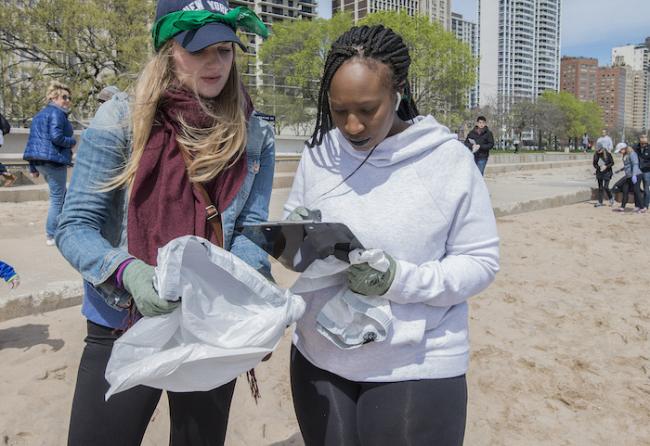
Has anyone actually made their own soap and liked it?
Has anyone tried making their own soap? Yes, I was watching Fight Club.
I’ve seen it mentioned in a few places and was curious if it’s worthwhile now that we’re all washing our hands more.
Read More